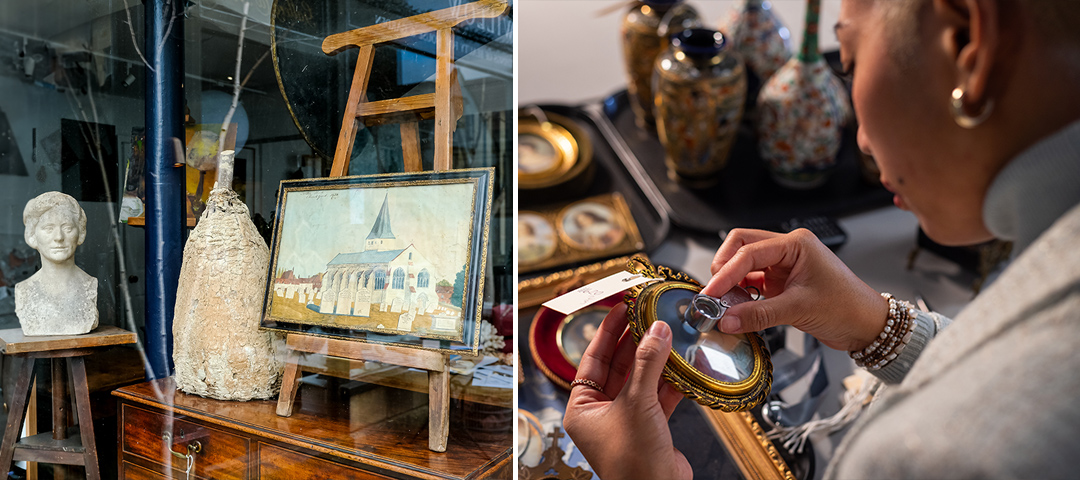A closer look at the upcoming EU regulations and what they mean for dealers, collectors, and museums worldwide
If you’re an art dealer, collector, or museum curator, there’s a significant change on the horizon that could affect how you do business. Beginning June 28, 2025, the European Union will implement new import restrictions on archaeological artifacts, antiques, and artwork created outside the EU – and the ripple effects could be felt across the global art market.
What’s Happening?
French antiques dealers recently held a press conference in Paris to voice their concerns about European Union Regulation 2019/880, which they claim will have a “dramatic and damaging impact” on the EU art market. The Syndicat National des Antiquaires (SNA), representing around 300 French art and antique dealers, organized the event to highlight what they see as “unreasonable and disproportionate” new requirements.
The New Requirements
Starting this June, anyone bringing certain cultural objects into the EU will need to provide extensive documentation proving legal provenance. This includes:
- Import licenses for archaeological items or elements of historical monuments more than 250 years old
- Importer statements for objects more than 200 years old valued at greater than €18,000 (about $19,500), including fossils, antiquities, manuscripts, and art
- Export licenses from countries of origin to prove items weren’t looted
The burden of proof will shift to the importer, who must demonstrate an object’s legal status rather than being presumed to own it legitimately – a reversal of traditional property law principles.
What This Means for US Dealers
If you’re a US-based dealer who regularly sells to European clients, these changes could significantly impact your business:
- Higher administrative costs for documenting provenance
- Longer processing times for international sales
- Potential loss of EU market share as buyers seek simpler purchasing options
- New challenges when participating in European art fairs
American dealers specializing in antiquities, tribal art, or pre-colonial artifacts might need to reconsider their European market strategy or invest in more robust provenance research and documentation.
For UK Dealers: Brexit’s Silver Lining?
Post-Brexit UK dealers might actually gain a competitive advantage:
- Diversion of trade from the EU to the UK market
- Opportunity to position London as a more accessible marketplace compared to Paris
- Strategic advantage for dealers with established provenance documentation systems
As Ivan Macquisten, a UK-based consultant for art trade associations, noted at the Paris conference: “In the wake of Brexit, France and the EU have had the opportunity to pass the UK as the world’s second-largest market… In my view this law will destroy that opportunity.”
EU Dealers Face the Biggest Changes
For dealers within the EU, especially in France (currently the world’s fourth-largest art market with nearly $5 billion in sales in 2022), the impact could be substantial:
- Dramatically reduced access to international art and antiquities
- Competitive disadvantage compared to non-EU markets
- Difficulties for returning EU citizens who cannot bring their collections home without extensive documentation
- Challenges for museum donations which could fall under the same import restrictions
Anthony J.P. Meyer, an SNA board member and founder of Galerie Meyer, expressed concern that many objects “never had a trace” of documentation because it wasn’t required when they were originally acquired. “They’ve been around… for years. No one ever requested any paper trail because there was no obligation to do so,” he explained.
The Intention Behind the Regulation
The European Commission developed these regulations to combat the illicit trade in cultural goods, particularly when such trade might contribute to financing terrorism. However, art market representatives argue there’s limited evidence connecting the legitimate art market to terrorist financing.
They point to several studies, including a 2020 RAND report and a 2022 US Treasury study, which found little proof that laundered antiquities finance terror organizations. As Belgian art lawyer Yves-Bernard Debie put it rather bluntly: “The fantasy that the art market is financing terrorism doesn’t exist.”
What Happens Next?
The SNA and other international trade associations are lobbying EU officials in Brussels, hoping to secure exemptions and amendments before the June 2025 implementation date. They acknowledge their public efforts have come late but emphasize the importance of preserving the art market’s cultural and economic contributions.
“We’re trying to save all of our jobs, our market, [and] save the possibility for people to appreciate art and to own art,” Meyer said. “The antique market is one of the great purveyors of cultural information and knowledge… If you kill the market, you’re going to kill all of that information and appreciation.”
The Practical Reality
While the regulation appears stringent on paper, Alexander Herman, director of the UK’s Institute of Art and Law, questions how rigorously EU customs offices will actually enforce the new rules. “I do think the law is quite heavy-handed,” he noted, “but the proof will be in the pudding: How the relevant Member State authorities end up applying and enforcing it in practice.”
What Can You Do Now?
If you’re involved in the international art trade, particularly with items that might fall under these regulations, consider taking these steps before June 2025:
- Review your inventory for items that will require documentation
- Begin collecting provenance information for vulnerable pieces
- Consult with legal experts who specialize in art and cultural property law
- Connect with trade associations to stay informed about potential changes or exemptions
- Consider adjusting your business strategy to account for potential market shifts
Digital Tools for Managing New Documentation Requirements
With these new regulations requiring extensive provenance documentation, dealers will need efficient systems to organize and access their records. One of the most challenging aspects of the new EU requirements is that obtaining an importer license or statement will require six images showing all angles of each item to accompany the paperwork — creating a significant image management burden for dealers with multiple inventory pieces. Digital inventory management solutions like Ronati Studio offer specialized tools that can help art and antique dealers meet these specific documentation requirements.
Ronati Studio allows dealers to:
- Centralize documentation by keeping all item information, images, and provenance details in a single location designed specifically for sellers of unique items
- Create comprehensive item records with the mobile app, even while traveling or at acquisition sites
- Document provenance thoroughly by attaching detailed acquisition information, history, and supporting imagery
- Generate professional tear sheets and documentation PDFs that can be used for import license applications and importer statements
- Track where each item originated and maintain records of previous ownership – critical information for the new EU requirements
For dealers who regularly import items into the EU, having a dedicated system to manage the increased documentation burden could make the difference between smoothly adapting to the new regulations and losing access to the European market.
The art world has weathered regulatory changes before, and creative solutions will undoubtedly emerge. By staying informed and prepared, dealers and collectors can navigate these changes while continuing to preserve and share our global cultural heritage.
What are your thoughts on these new regulations? Have you already begun preparing for the changes? Share your experiences in the comments below.








